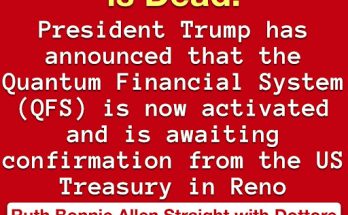In the Spotlight
OPINION
Waste and Abuse in the Paycheck Protection Program | Opinion

This article was first published by Newsweek.
When COVID-19 began to infect Americans in early 2020, Congress appropriated $787 billion under the Paycheck Protection Program (PPP) to allow businesses and nonprofits to pay employees when they were forced to close. These payments were made in the form of low-interest loans that would be forgiven if the funds were spent on salaries, wages, and related expenses. PPP’s purpose was to maintain payrolls and incomes while the country fought through the early months of the virus.
A recent study from OpenTheBooks, an organization devoted to transparency in government spending, reports that more than 95% of these loans were forgiven, and many were sent out to wealthy organizations, including top law and accounting firms, country clubs, and even family offices that were facing little financial concern.
OpenTheBooks reports that $1.4 billion in forgiven PPP loans went to some of the largest law and accounting firms in the country. Nearly half of the largest 300 law firms in the United States took payments from the program, as did three-quarters of the largest accounting firms. Overall, some 25,000 law and accounting firms received $13 billion in PPP loans. While those firms may have qualified for the payments, it is questionable whether they really needed them.
Among law firms, Boies Schiller Flexner, led by long-time Democratic Party counselor David Boies, received the maximum of $10 million in forgiven PPP loans, even as the firm billed clients for $480 million during 2020 and 2021 and equity partners in the firm received $4.5 million each in average profits. Meanwhile, partners and employees in the firm donated $1 million to candidates during the 2020 and 2022 campaign cycles, almost all of it to Democrats.
Other firms received large PPP loans even though their billings increased during 2020 and 2021—as did the incomes of equity partners. Kasowitz Benson Torres, a New York City firm, received $10 million in PPP loans though revenues grew from $217 million in 2019 to $238 million in 2021. Pryor Cashman, another New York City firm, received a $6.7 million loan in 2020 (forgiven in 2021), though the firm’s revenues increased by 29% between 2020 and 2021. That firm used $850,000 of the PPP loan to pay down the mortgage interest on its office space. These firms represent just a few of the more than 100 firms that took PPP money.
This was a common pattern among the law firms that received the largest PPP payments: Their revenues increased during the pandemic as equity partners made millions, while a portion of the loans were used to pay for mortgages, rents, utilities, and the like. Lawyers, like many professionals, experienced little trouble working from home during the pandemic—unlike owners of hotels, restaurants, dry cleaners, and other small businesses. Indeed, one study showed that law firms enjoyed a banner year in 2020, as profits reached new heights during the pandemic.
Large accounting firms also received PPP loans, though many were able to continue working and billing clients during the pandemic. OpenTheBooks found that 237 of the 300 largest firms received $635 million in forgiven PPP loans, with the average firm receiving $2.6 million. Did these firms really need the money? As with law firms, the largest accounting firms increased their revenues by nearly 6% from 2019 to 2020, according to a 2021 study. Firm spokesmen say that employees suffered from stress during the pandemic, but so did millions of other Americans who also lost their jobs and incomes or had to shutter their businesses altogether.
OpenTheBooks also found 2,300 golf and country clubs that received PPP loans adding up to nearly $1 billon—many of them in prosperous communities, such as La Jolla, California, Naples, Florida, and Reston, Virginia. PPP loans were also sent to at least 769 newspapers and news outlets with fewer than 500 employees, with the Seattle Times topping the list—receiving two forgiven loans for $11.8 million. How can these newspapers offer fair criticisms of government spending once they have received large subsidies from that very source?
It is doubtful that PPP did much good in preserving jobs and incomes that otherwise would have been lost. A recent study in the Journal of Economic Perspectives concludes that only a quarter or a third of PPP money went directly to workers who stood to lose their jobs. The balance flowed “to business owners and shareholders, including creditors and suppliers of PPP-receiving firms.” The latter category would no doubt include most of those law and accounting firms receiving loans, and perhaps a good number of the golf clubs and newspapers receiving them as well. The study concludes that the PPP was a scattershot program that distributed funds to many firms that did not need them, wasting billions of taxpayer dollars in the process.
Much to their credit, some firms refused to join the scramble for handouts simply because they were available. Others received loans but soon returned the funds because they did not need them. They represent an honorable tradition by which Americans treasured their independence from government more than the subsidies that government offers at taxpayers’ expense. The PPP program tested well-to-do Americans on that point, and far too many failed.
James Piereson is a senior fellow at The Manhattan Institute. Adam Andrzejewski is the CEO and founder of OpenTheBooks.com.
The views expressed in this article are the writers’ own.
www.newsweek.com/waste-abuse-paycheck-protection-program-opinion-1766582




